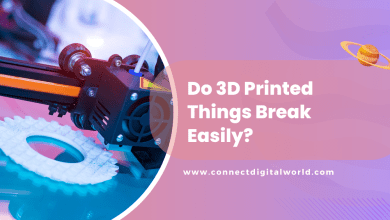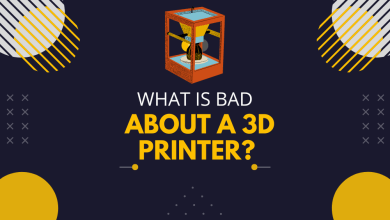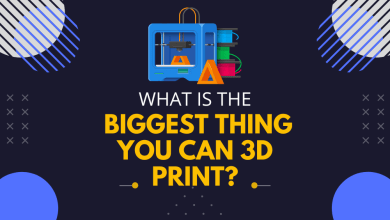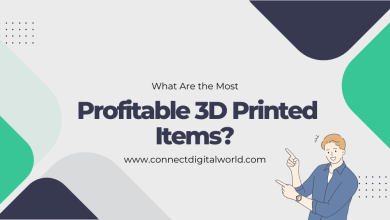Is Buying a 3D Printer Really Worth It?

There are many different reasons why you would want to get a 3D printer. However, there are also a lot of different things that you need to know about this type of technology. In order to determine whether or not it is worth the investment, you will need to look at various factors such as cost, applications, and fire safety.
Cost of a 3D printer
The price of a 3D printer can vary from a few hundred dollars to several thousand of dollars. This depends on the type of model you choose and the materials you want to use.
Beginner printers, also known as entry-level models, can cost between $300 and $1,500. If you are a hobbyist, this can give you the freedom to try new things without spending a fortune. These models can create great prints and models. However, they tend to be slower and less robust than higher-priced options.
If you’re a professional, you can spend between $3,500 and $6,000. This price range is usually used by robotics clubs and schools, as well as large businesses.
Regardless of your budget, it is important to leave room for other expenses. In addition to the printer itself, you may need to buy filaments and other consumables. Purchasing high-quality filaments can increase your costs significantly.
Other costs can include upgrades and repairs. Depending on the model, you may need to change the nozzle or other parts of the printer. Also, your electricity bill should be taken into consideration.
Another factor that can have a significant impact on the cost of your 3D printing experience is the labor involved in post-processing. Some materials, such as resins, require extra processing after the print is complete.
While this may sound like an added expense, it’s important to remember that resins are easier to work with and can create high-quality printed parts. They are generally cheaper than other materials, such as plastics.
You can also expect to pay a small amount for shipping. Depending on your location, your yearly 3D printer bill can be under $10.
For businesses, a larger budget is necessary for tasks that require a higher level of skill. For example, a business that needs to produce metal parts would need a professional desktop FDM printer.
An enterprise-level 3D printer will cost from $5,000 to tens of thousands of dollars. In order to get one, you’ll need a strong business case. It’s a good idea to look at competitors before making your purchase.
Applications
3D printers are versatile device that can be used for a variety of purposes. They can be found in design studios, schools, or in the hands of hobbyists. Using one of these machines can be an affordable way to create replacement parts for mechanical devices or for medical equipment. You can also use a 3D printer to make wax castings for jewelry.
A 3D printer is a machine that uses additive manufacturing to create an object from a virtual model. The process works by laying down successive layers of material until the object’s shape is complete. These layers can be joined or fused automatically to produce the final shape.
A camera can be mounted on a movable part of the 3D printer. Alternatively, the camera can be a separate device such as a mobile phone. This device may be able to provide real-time visual feedback to the user.
In addition, the camera can provide the user with a view of the object being printed. If the 3D printer has a projector, the projector can be used to project the image of the object being printed. This is an augmented reality experience that overlays computer-generated visual information on top of the actual object being printed.
Similarly, an embedded light source can be used to illuminate the area of the object being printed. The light can be used to highlight specific features or patterns in the printed object.
The most important thing about a 3D printer is that it can be used to fabricate real objects from a virtual model. In fact, this technology is already being used in engineering, aerospace, and dentistry.
Depending on your application, you may need to adjust the position of your print head to ensure that the object being printed is in the correct position. Other times, you may need to augment the texture of the surface of the printed object.
Finally, you may want to consider incorporating augmented reality into your next project. Embedded light sources such as lasers and light-emitting diodes can be used to display patterns or patterns can be projected on the printed object.
Fire safety concerns
If you’re interested in 3D printing, it’s important to learn about fire safety concerns. Most printers can catch fire, and you may want to install a smoke detector close to your machine. You’ll also want to have a fire extinguisher nearby. However, these are not 100% effective ways to prevent a fire.
The best way to avoid a 3D printer fire is to keep your workspace clean. This will reduce the amount of flammable material around your machine, as well as protect your eyes from the chemical burns that could result from caustic soda.
Another important factor is the type of 3D printer you own. Many cheap machines use low-quality wiring and materials, and many contain dangerous flammables. Make sure you understand the materials in your machine and have an expert review them before buying.
Having a fireproof room for your 3D printer is the ideal solution. A room with proper ventilation, a well-ventilated door, and a doorknob that locks are all good places to start.
Also, you’ll want to check for loose wires, faulty components, and electrical malfunctions. Loose wiring can result in a thermal runaway. Check your printer for loose screws, connectors, and cables, and be careful when connecting the power cord.
To keep your 3D printer safe, make sure it is properly maintained and checked for safety. Clean out lint and dust from the printer.
Aside from keeping your 3D printer safe, you should take steps to make sure it works as it should. Buying an automatic fire extinguisher is one option. Some models feature a Smoke Signal, which detects smoke and shuts the printer down.
Fires can happen for a number of reasons, from loose electrical wires to a thermal runaway malfunction. Keeping your environment clean, tidy and free of clutter will minimize the chances of a fire. It’s also a good idea to keep a regular fire extinguisher near your machine.
When you’re not using your 3D printer, it’s a good idea to use a separate smoke detector. This will give you the peace of mind to know that you’ll be able to quickly extinguish a fire should one arise.
Learning tool
If you’re considering purchasing a 3D printer, it’s a good idea to find a learning tool to help you get started. A good learning tool should be easy to operate, inexpensive, and reliable. It should also have convenient service and common consumables.
When you’re looking to buy a 3D printer, it’s important to know the different models and how they function. These are usually plug-and-play devices that are pre-assembled. The initial cost may be a deterrent for inexperienced users, but they can be useful for a wide variety of purposes.
For example, in physics, students can learn about reaction engines by creating a 3D model of a rocket. This allows students to see the process from all angles, and they can even experiment with different materials.
Another benefit of purchasing a 3D printer is that it can teach students problem-solving skills. Students who fail at the beginning can learn how to persist and become more confident. They can use these skills to solve problems in their daily lives.
Some educators consider buying a learning tool such as a 3D printer as a way to speed up lesson plans. This is especially helpful in elementary classrooms. Young learners enjoy the process, and it keeps them engaged. Unlike with traditional software, students can see their ideas turn into reality, and they can test out their own designs and see if they’re correct.
If you’re looking for a great 3D printer for educational purposes, look for ones that come with an easy-to-use build plate. Also, choose one that has an enclosed print chamber, because it’s safer to work with.
Finally, it’s a good idea to choose a printer that offers a good range of filament types. You don’t want to have to buy new filament if you’re not using the one you’ve purchased. Your printer should be able to accommodate a large range of materials, including plastic, metal, and resin.
If you’re looking for reputable 3D printers for education, check out Flashforge Finder, Printrbot Easy, and Dremel. Each has a wide selection of educational resources and a certification program for teachers.





